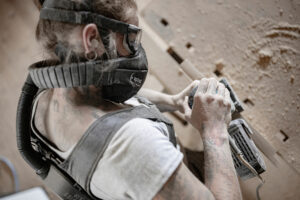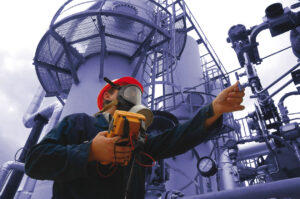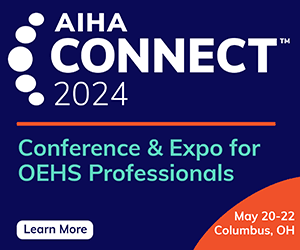By: Tim Turney, Contributor According to a recent collaborative study between the World Health Organization (WHO) and the International Labor Organization (ILO), the majority of work-related deaths over a 15-year period can be attributed to respiratory and cardiovascular diseases.[1] Air sampling pumps are crucial pieces of a kit that offer employers a tool to effectively…
Read More >>The Risk of COPD is Increased for Workers in Certain Industries and Occupations and with Certain Occupational Exposures By: Paul K. Henneberger, MPH, ScD, Senior Science Advisor, NIOSH Respiratory Health Division Editor’s Note: The following article first appeared on the NIOSH Science Blog. For the original article, visit: https://blogs.cdc.gov/niosh-science-blog/2022/11/16/copd-month/. Chronic obstructive pulmonary disease (COPD) is…
Read More >>IHW sat down with the folks at ILC Dover to discuss their innovative respirators, NIOSH-approved filtration and more. First, what is the difference between a standard respirator and an emergency escape respirator? “Standard” respirators are typically designed to support workers in operations where they are performing a job – e.g., a production operation, lab testing…
Read More >>Overview of the ASTM F3407 Standard Test Method for Respirator Fit Capability By: Christopher Coffey, Ph.D.; Lisa Brosseau, ScD, CIH; M. E. Bonnie Rogers, Dr, PH; and Jonathan Szalajda, MS One of the most important criteria for any filtering facepiece air-purifying respirator to be effective is that a good seal is formed between the respirator’s…
Read More >>Silica: Stealing Lives for Centuries Approximately 2.3 million professionals face exposure to crystalline silica at work. In 2016, OSHA updated the exposure regulations for silica for the first time since 1971. Two years later, the National Institute for Occupational Safety and Health (NIOSH) reported on the largest cluster of black lung disease among active coal…
Read More >>EXPERIENCE A HIGHER LEVEL OF COMFORT AND COMPLIANCE Try this P100 and perform all your typical tasks. Note how much easier it is to breathe, how your energy levels are impacted and even how your mood on the job changes. Request a Free Trial
Read More >>By: Tim Turney, Contributor The effects of inhaled substances, such as dusts gases and vapors, has long been known to be a cause of occupational lung disease as a result of exposure in the workplace. The effects of exposure can develop quickly or take years to develop, leaving workers vulnerable to asthmatic and allergic reactions…
Read More >>By: Sean Baldry, Contributor Is it necessary to quantify worker exposures to respiratory hazards before selecting a respirator that will be used for a medical evaluation? Since the selection of respirators should be based on the specific respiratory hazards that your employees will be exposed to, or are likely to be exposed to, in your…
Read More >>By: Ray Chishti, Contributor Working around dusts, mists, fumes, aerosols, gases and vapors can be hazardous to your health. Depending on the contaminant, overexposure can cause lung diseases; problems with the liver, kidneys, heart, or nervous system; or even cancer. To control contaminants, operations can be enclosed or confined; general and local ventilation can be…
Read More >>By: Patrick Bescoby, Contributor Thanks to major advancements in real-time technology, protecting workers from dangerous silica dust just became simple, easy and much more effective. With new silica monitoring technology, you can now reduce costs, improve business efficiency and save lives—all in real time. Who is at Risk? It is estimated between 40-50 million workers…
Read More >>Leaders in Industrial Hygiene
Council for Accreditation in Occupational Hearing Conservation (CAOHC)
Subscribe!
Sign up to receive our industry publications for FREE!


















